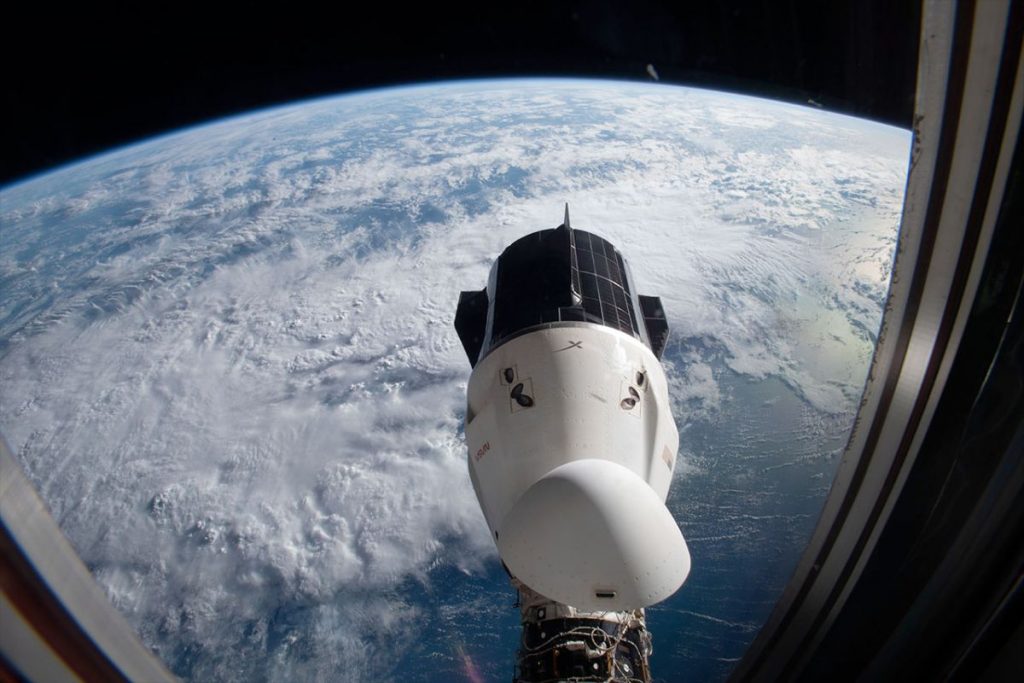NASA plans to buy five more SpaceX crewed flights to the International Space Station.
The agency announced a “sole source modification” to its contract with SpaceX, which operates the only American system currently carrying NASA astronauts to and from the International Space Station. The expected value of the modified contract was not disclosed in an agency blog post (opens in new tab) Wednesday (June 1).
The five-flight purchase adds on to a $3.5 billion contract awarded to SpaceX in February for three additional astronaut missions with its Falcon 9 rocket and Dragon capsule: Crew-7, Crew-8 and Crew-9. NASA said at the time that it may order more flights from SpaceX.
For perspective, Crew-4 is in space right now, Crew-5 should launch in September and Crew-6 is scheduled for spring 2023. Assuming the newly purchased five flights continue in sequence after Crew-9, the contract modification would bring SpaceX through mission Crew-14.
Related: 8 ways that SpaceX has transformed spaceflight
While SpaceX is the only company sending astronauts to space for NASA right now, the agency indicated that Boeing’s Starliner capsule will likely be ready soon.
Starliner met its major objectives during an uncrewed test flight to the ISS that ended on May 25.
“The recent success of Boeing’s uncrewed flight test is helping to solidify NASA’s long-term goals,” Steve Stich, manager of NASA’s commercial crew program, said in the agency statement Wednesday. “It’s critical we complete Starliner’s development without undue schedule pressure while working to position both Boeing and SpaceX for sustainable operations in the years ahead.”
Space station operations are currently approved through the end of 2024. NASA wants to keep the orbiting lab going until at least 2030, but the other major partners in the program, including Russia, would have to approve such an extension. Russian approval might be difficult given that many of the nation’s other space partnerships have disintegrated amid Russia’s invasion of Ukraine. (Russia’s ISS activities and cooperation remain relatively unaffected.)
Current space station rotation rates require crewed spacecraft from all nations to fly up and down about four times a year for basic station needs, including maintenance and science. NASA doesn’t carry that whole load, however. Russia supplies cosmonauts via its Soyuz spacecraft, which NASA still uses from time to time for its astronauts; for example, NASA astronaut Mark Vande Hei came back to Earth on March 30 in a Soyuz.
NASA sees SpaceX and Boeing as keystones in its astronaut transportation needs in the coming years; the agency awarded contracts to both companies in 2014 for such work.
NASA noted on that Wednesday it may need to use additional SpaceX flights as soon as 2026. Ordering more Dragon missions that may fly even after Starliner is ready provides important redundancy, agency officials said.
The goal of this redundancy is to “maintain safe space station operations, and allow each company to work through any unforeseen issues that could arise as private industry builds operational experience with these new systems,” NASA officials wrote in the blog post.
NASA added that its most recent modification to the SpaceX contract does not preclude the agency from making additional changes later as transportation service needs arise.
Aside from providing services to NASA, Dragon has flown private crewed missions to orbit — namely, September 2021’s Inspiration4 and Ax-1, which sent four people to the space station in April.
The spacecraft is also a key part of the Polaris Program, a new billionaire-backed venture that will see Inspiration4‘s Jared Isaacman return to orbit several times aboard SpaceX spacecraft. Polaris flights are anticipated to involve Dragon and a forthcoming SpaceX system under development, Starship.
Follow Elizabeth Howell on Twitter @howellspace (opens in new tab). Follow us on Twitter @Spacedotcom (opens in new tab) and on Facebook (opens in new tab).

